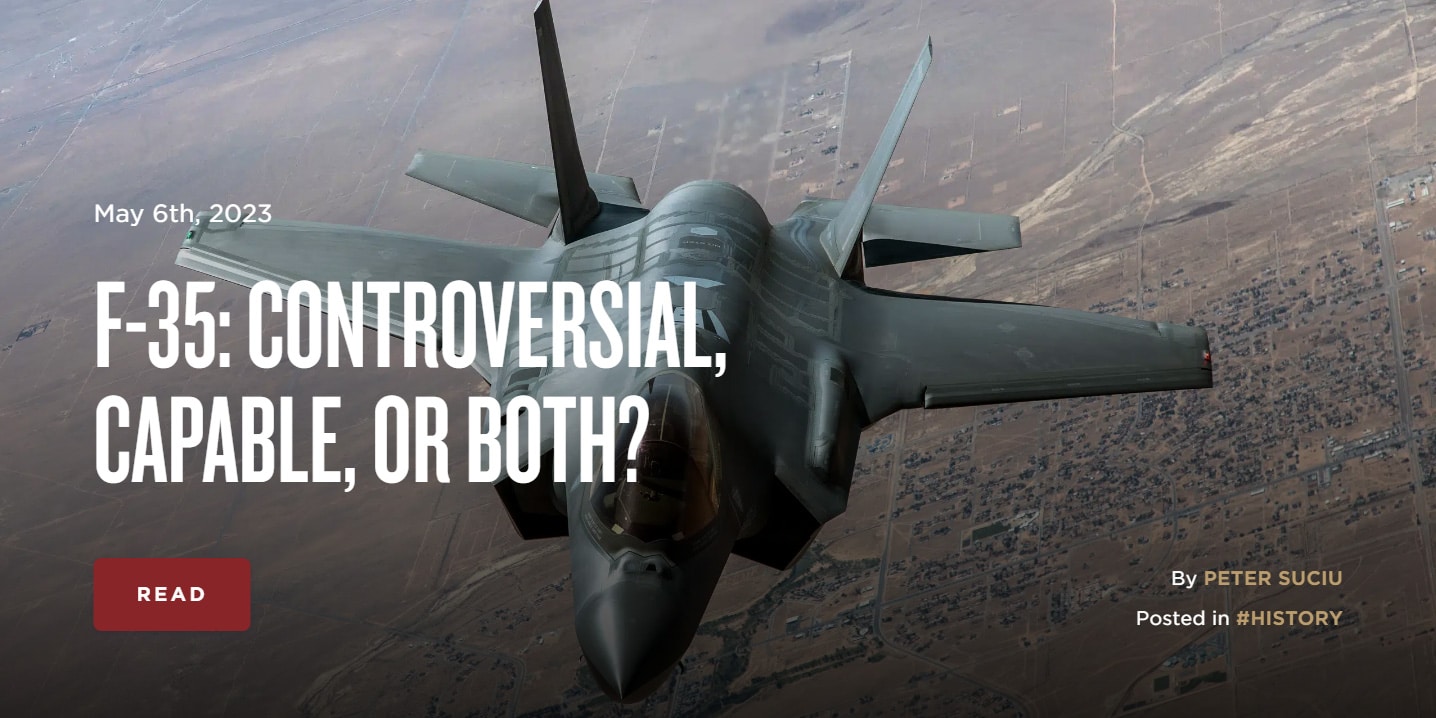Hello all, here is today's article posted on TheArmoryLife.com. It is titled “F-35: Controversial, Capable, or Both?” and can be found at https://www.thearmorylife.com/f-35/.











 www.defense-aerospace.com
www.defense-aerospace.com









My airline stocks are down, so is my Boeing, took a loss on a silicon valley bank, Biden is killing us on the market, but still making moneyHow’s your Boeing stock doing, Talyn?
I am curious what your relationship with the F-35 is, you seem to have a lot of info and opinion, sorry to ask, I am new here.Other than some really good sensors/intel gathering capability, and ability to penetrate contested airspace deeper (not as good as the F-22) the F-35 is a bit of a dog in the air with speed limitations (considering its' 43,000 lbst. engine that has issues itself)) to just barely supersonic to avoid structural damage to the tail area and the stealth coating.
It's really just a "extremely-expensive" faster attack jet than the Harrier for the USMC, and nowhere near being an air-superiority fighter like the F-22.
The program sucked away funding from other programs to keep it afloat due to ongoing problems, since it was called "To Big to Fail".
The design trade-offs in order to give the USMC a new V/STOL attack has really hampered performance for the "A" and "C" versions to accommodate the USMC "B" versions lift-fan need in the overall design which locked-in aerodynamic issues, and is dead-weight in the "B" 99% of the time, since its only used for a few minutes when landing vertically on ships.
Plus, it needs a lot of specialized infrastructure to support it due to it's computerized systems.
It's really a misnomer to name it the "Lightning" because of the issues, and determent to the original WW2 P-38 Lightning.
But LM has a cash-cow for the foreseeable future for production & support.
My .02



 www.defense-aerospace.com
www.defense-aerospace.com
Have you flown one ?Other than some really good sensors/intel gathering capability, and ability to penetrate contested airspace deeper (not as good as the F-22) the F-35 is a bit of a dog in the air with speed limitations (considering its' 43,000 lbst. engine that has issues itself)) to just barely supersonic to avoid structural damage to the tail area and the stealth coating.
It's really just a "extremely-expensive" faster attack jet than the Harrier for the USMC, and nowhere near being an air-superiority fighter like the F-22.
The program sucked away funding from other programs to keep it afloat due to ongoing problems, since it was called "To Big to Fail".
The design trade-offs in order to give the USMC a new V/STOL attack has really hampered performance for the "A" and "C" versions to accommodate the USMC "B" versions lift-fan need in the overall design which locked-in aerodynamic issues, and is dead-weight in the "B" 99% of the time, since its only used for a few minutes when landing vertically on ships.
Plus, it needs a lot of specialized infrastructure to support it due to it's computerized systems.
It's really a misnomer to name it the "Lightning" because of the issues, and determent to the original WW2 P-38 Lightning.
But LM has a cash-cow for the foreseeable future for production & support.
My .02
